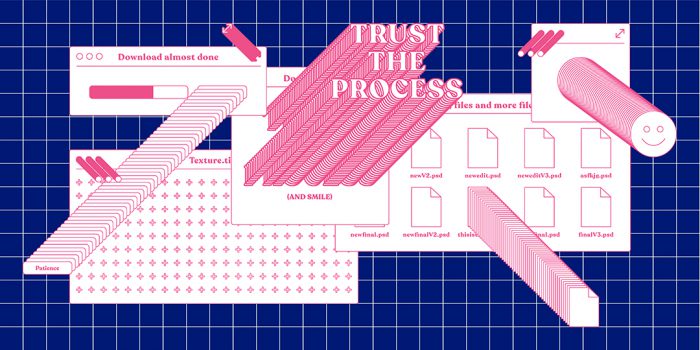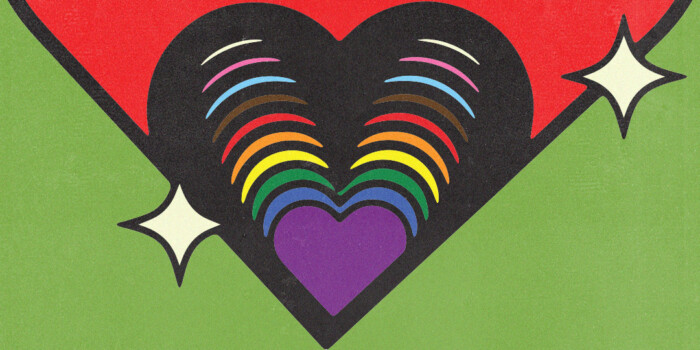The 10 Best Jobs For Creative People to Explore
Consider yourself creative? Then great news! There are several creative careers open to you that are well paid, creatively challenging and fulfilling. And best of all, new applicants are actively in demand by companies everywhere.
Right now, creative skills are increasingly sought-after by virtually every type of business. Why? Because, in a digital world, they’re increasingly important in gaining a competitive edge over rivals and establishing yourself as a market leader.
You need to be trained for these creative careers, but again that’s not a huge problem. At Shillington for example, we offer industry-ready training in graphic design in a way that you can fit around your lifestyle, via three-month full-time or nine-month part-time courses, in the UK, USA and Australia.
So what kind of careers for creative people are on offer? Read on as we explain 10 of the most common jobs for creative people that are in demand today, and which one might the best fit for you.
1. Graphic designer
Graphic design is one of the most attractive jobs for creative people to pursue right now, both in terms of job fulfilment and competitive salaries.
Traditionally, graphic design primarily involved the design of printed materials, such as books, magazines, newspapers, brochures, posters, flyers and advertisements, as well as individual graphic elements such as logos and signage. Since the rise of the digital interfaces, though, it now increasingly involves designing for interfaces such as websites and apps. But wherever your designs are intended for, the same fundamental principles underlying graphic design apply across the board.
Skills involved in graphic design include typography, use of grids, page layout and printmaking, which typically requires learning Adobe layout software, including Photoshop, Illustrator and InDesign.
Graphic design also involves broader business skills such as research, strategy, branding and copywriting. That’s because graphic design is, at its core, not about making “pretty pictures” but about solving problems for organisations and their customers.
When it comes to creative jobs, there are few more in demand than graphic designers right now. And the salaries are relatively impressive too, even at junior level, which makes it one of the best careers for creative people to pursue right now.
Typically as a graphic designer, you’ll work for a design studio, an advertising agency or an in-house department of a big company.
According to Glassdoor, the average salary of graphic designer is $55,000 in New York and £37,830 in London. Find out more in our complete graphic designer salary guide.
2. Web designer/developer
As creative careers go, the role of a web designer is quite similar to that of a graphic designer but is focused purely on the design of websites and apps.
As we mentioned above, a graphic designer might create a visual layout for a website or app interface. However, they won’t typically write any code. A web designer, however, will normally do at least some of the coding themselves, or at least direct others to do so with a full understanding of the languages involved.
To become a web designer then, you will need a working knowledge of HTML, CSS and JavaScript, and you’ll progress from there to specialise in any number of coding languages and/or libraries throughout your career (many of which have yet to be invented).
There’s no hard-and-fast rule about whether to call yourself a web designer or a web developer, but in general terms, the former is more focused on the aesthetic design of a website or app, and less on coding, while the former is the opposite.
Typically, you’ll work for an agency that specialises in web design and development, within the web design department of a broader design agency, or directly for a big company. Depending on how well your skills develop, the salaries can be very impressive indeed, making it one of the most lucrative creative jobs around.
According to salary.com, the average salary of a web designer is $68,000 in New York and £30,000 in London.
3. UX designer
Of all the creative jobs on this list, UX designer is a relatively recent one to emerge. It’s a form of a web designer, but a lot of confusion surrounds what it involves, even within the web community itself!
UX is short for ‘user experience’ and so, in general, a UX designer will be more focused on the functionality of a website or app, and how well it meets user expectations, and less on the aesthetic design and underlying coding.
A UX designer will usually also take more of a leadership role in driving the general direction and planning behind the building of a website or app and tasks others with implementing their vision on a practical basis. For this reason, it’s one of these jobs for creative people who have an interest in strategy, conceptual thinking and team building.
Typically as a UX designer, you’ll work for an agency that specialises in web design or UX. That said, as UX increasingly enters the mainstream, the bigger creative agencies and companies are starting to employ UX designers directly.
According to Built In NYC and Adzuna, the average salary of a UX designer is $98,000 in New York and £61,000 in London.
4. Artworker
Artworker is a traditional job title that doesn’t get talked about a lot these days, but it’s still very much in demand by many organisations.
It’s a production-based role that would suit anyone trained in graphic design who has a fine eye for detail, and a need to strive for perfection.
An artworker will typically carry out day-to-day tasks such as adjusting colours, making alterations to typography, addressing minor errors and inconsistencies, from the placement of objects in a grid to incorrect page numbers, and preparing files for print
Of course, these tasks are not exclusive to artworkers, and in some organisations where this creative role does not exist, they will be carried out by graphic designers, or even art directors.
As with a graphic designer role, as an artworker, you’ll typically work for a design studio, an advertising agency or an in-house department of a big company.
According to Payscale and Neuvoo, the average salary of an artworker is $50,000 in New York and £28,000 in London.
5. Motion designer
One of the more specialised careers for creative people, motion design is about creating moving images. But it’s not the same as being a full-on animator who might work on a Disney movie, say. Instead, a motion design creates the kind of minimal, short bursts of animation you might see in a TV ident, within a videogame, on a website splash screen, an app loading page, or a quick explainer video.
Plus, subtle animation in any design significantly adds to an experience. A good animation design can be functional, delightful, a welcome addition that can enhance the overall usability. Here’s a great read from InVision about design animation.
Motion design essentially involves applying the principles of graphic design to animation, so it’s quite a specialised profession.
You’ll need to become proficient in both 2D and 3D animation, using software such as After Effects, Cinema 4D and Premiere Pro.
However, job opportunities are pretty broad, and potential employers may include advertising agencies, design agencies, web design agencies, animation studios, video game companies. TV companies and movie studios.
According to ZipRecruiter, the average salary of a motion designer is $77,000 in New York and £37,000 in London.
6. Illustrator
For someone with real artistic skill, illustration is one of the best creative careers to pursue right now. But what exactly is the difference between art and illustration?
Essentially, while an artist draws or paints pictures that fulfil their inner creative vision, and hope people will buy them, an illustrator draws or paints pictures to order for commercial purposes, usually to a brief.
There’s no particular requirement to create work in a particular way: some illustrators will use traditional media like oils or pencils, others will work purely on digital tablets, using software such as Procreate or Illustrator, while others still may combine or switch between both.
Usually, an illustrator will become known for their particular style, and clients will approach them because they like that style. Your portfolio then is super-important because the kind of work you show will determine the kind of commissions you get.
Illustrators typically work as freelancers, although they may be represented by an agent or agency, who will seek out clients and deal with much of the business side of things, in return for a cut of the money. Typical clients include advertising and design agencies, as well as book and magazine publishers.
According to Glassdoor and Totaljobs, the average salary of an illustrator is $59,000 in New York and £42,000 in London.
7. Concept artist
A concept artist is another one of the more niche careers for creative people to follow.
You’re a special kind of illustrator who works for entertainment companies such as videogame makers, movie studios, TV production companies, and specialist toy manufacturers.
The keyword here is ‘concept’ because the artwork you produce will normally not appear in the final product, but act as inspiration for the animators/game coders/3D artists etc. who produce the latter.
Concept artists traditionally worked in physical media such as paints and pencils, but nowadays are nowadays expected to be skilled in digital 2D software such as Illustrator, and increasingly in 3D software such as Cinema 4D and Maya too.
According to Glassdoor and Payscale, the average salary of a concept art is $59,000 in New York and £25,000 in London.
8. CG animator
When you think of animation, most people think of traditional, cel-based animation, in classic Disney features like Snow White and the Seven Dwarfs. But nowadays, animation is increasingly computer-generated, and not just for obviously animated features like Toy Story.
What used to be called “live-action” films also contain a lot of computer-generated animation too. That’s most obviously in the form of visual effects like alien spacecraft and explosions, but also so-called ‘invisible’ effects, such as digitally created buildings, landscapes and even animals (the recent remake of The Lion King, for example, was entirely computer-generated from start to finish).
As with all the creative jobs on this list, to become a CG animator requires a mix of artist talent and technological skill.
You’ll need to become skilled and trained in software such as After Effects, Premiere Pro, Final
Cut Pro and Maya. And perhaps more than any of the creative careers showcased here, you’ll need to put in a lot of intensive, hard work to achieve your goals.
You’ll also need to work as part of a team, often a very large one, because few CG animations are ever created without a vast number of working hours. On the minus side, that means you’ll rarely create something that’s entirely your own. On the plus side, what you help to create as part of a team will probably be incredibly impressive and something you can truly be proud of.
Typically, you’ll work for a videogame, TV or movie production studio, and you’ll probably want to specialise early on. Once you do, there are many niche job titles to aim for within the field, including 3D modeller, rigging artist, dynamics artist, VFX artist and more.
According to Payscale and Indeed, the average salary of an animator is $58,000 in New York and £29,000 in London.
9. Set design
Set designers create the overall look of a theatre, television or film production. They’re also increasingly in demand to create bespoke sets for things like advertising shoots, music festivals and promotional events.
People usually enter set design through related subjects including (but not limited to) interior design, fine art, 3D design or architecture, and will normally have learned practical set design skills through hobbies such as low-budget independent films or student, amateur, fringe or community theatre.
Set design can be a rewarding and fulfilling job, but one where you’re going to have to work hard to keep everybody happy. So this is one of these creative careers that requires a high level of organisation and excellent networking, team-building and communication skills.
According to Glassdoor, the average salary of a set designer is $57,000 in New York.
10. Game designer
With the video games industry now a bigger earner than even the movie industry, it’s obvious that there’s going to be a demand for game designers.
What does this coolest of creative jobs involve? Essentially it’s about combining your love of games with a keen understanding of visual design, gameplay dynamics and a love of storytelling, to develop games for everything from PCs and games consoles to smartphones and websites.
As with CG animators, game designers usually work with large teams including everyone from artists to programmers, and most typically (and obviously) for a videogame studio. You’ll usually need a degree, specialist training, and some experience within the games industry to get a job in this competitive field.
According to CareerExplorer, the average salary of a video game designer is $90,000 in New York and £33,000 in London.
Looking for a more creative career? There’s always time to reimagine your future and retrain. Our Shillington team is wishing you the best of luck, whatever direction you choose! Follow this guide on how you can get started as a graphic designer, even if you’re a total beginner.
Want to take your design career to the next level? Study design and take the online graphic design course at Shillington!
Want to win some amazing prizes and stay in the loop with all things Shillington? Sign up to our newsletter to automatically go in the draw.








